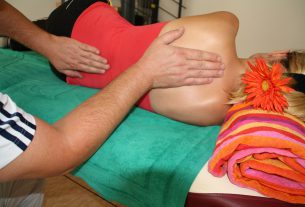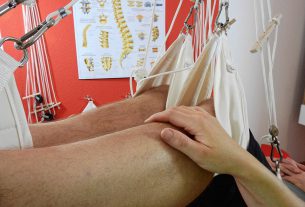Frozen shoulder is the condition of pain and stiffness in the shoulder joint accompanied by loss of motion. An inflammation in or around the shoulder may trigger the body’s normal defensive response of stiffness. When the shoulder becomes stiff, it becomes too painful to move. Someone with a frozen shoulder may not be able to reach above and over the head or touch the back.
While there is no definite cause of frozen shoulder, over 90 percent of patients experience a full recovery. Doctors recommend physical therapy for frozen shoulder as the best treatment.
Physical therapy for frozen shoulder starts with reducing the pain and stiffness of the shoulder and increasing blood circulation through heat. One effective way of the heating method is taking a 10-minute hot shower or bath. Alternatively, the physical therapist may apply heat to your shoulder locally with the use of heating pads, wraps or towels. Hot water bottles and heat creams and ointments may also be used.
A shoulder massage is also a good way to start physical therapy for a frozen shoulder as it increases the flow of blood and oxygen into the area. Once pain is reduced either through the heating or through massage, the therapist proceeds with a series of physical therapy exercises.
In physical therapy for a frozen shoulder, you will first perform weight and non-weight stretching exercises to improve the flexibility of your shoulder joint. The common exercises include arm swing with weights, arm raise, overhead stretch, stretching your arms across your body, and towel stretch.
It is important to note that during these stretching exercises, you should feel tension but you should not overstretch your shoulder to the point where you feel pain or severe discomfort. These exercises are done once or twice daily until the shoulder restores its normal range of movement.
Your doctor will advise you should you need to perform other exercises to tone and strengthen your shoulder muscles such as rotation exercises. Remember not to force movement in your shoulder. This does not mean you should not move it at all but instead to limit activities that may further injure your shoulder.
If physical therapy for a frozen shoulder does not work for you, your doctor may recommend surgical treatment. The good news is physical therapy for frozen shoulder is usually enough for patients to get effective results that improve with time. If you have a frozen shoulder, consult a physical therapist and get the treatment that you need.





